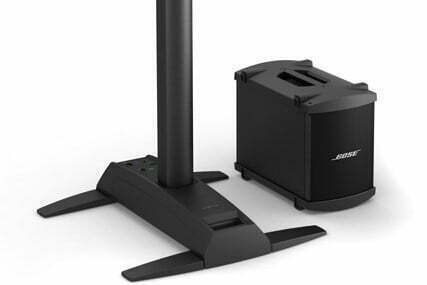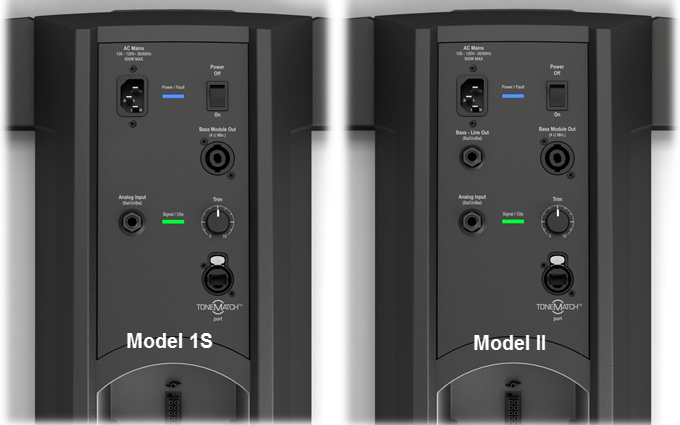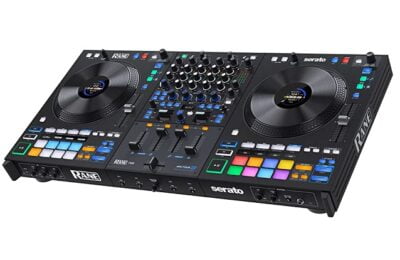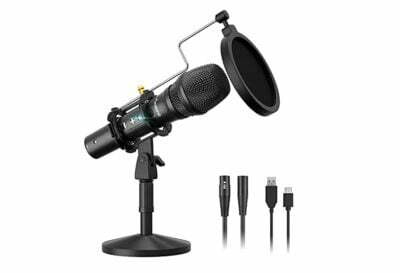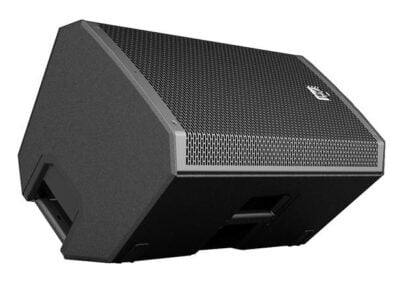Description
“L1 system combines your monitors, mixers, PAs into one compact and portable yet powerful PA system”
L1® Model 1S Portable Line Array System
- Recommended for audiences up to 300
- 12-speaker articulated line array delivers 180-degree horizontal sound coverage
- Produces the most consistent tonal balance with less volume drop-off over distance
- System’s interconnecting pieces allow for easy transport, setup and breakdown
Spend less time setting up your gear and more time enjoying it. The new L1 Model 1S portable line array system delivers a potent combination of portability and performance. It’s compact and light enough to make setup quick and easy, yet powerful enough to fill a mid-sized venue. Includes one B2 bass module for more flexibility and even greater power at the low end.
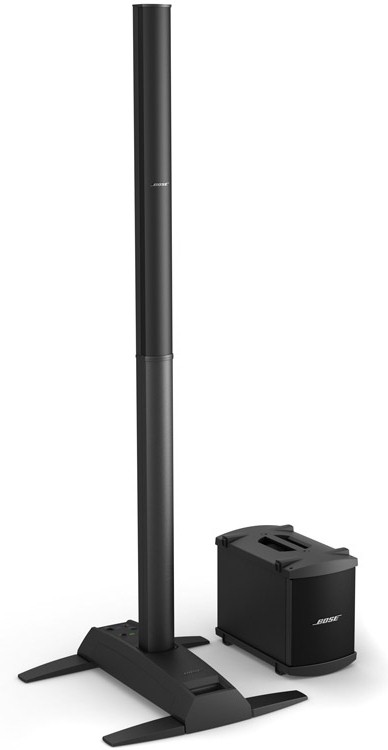 Put your PA behind you
Put your PA behind you
The vertical configuration of the system’s small, closely spaced drivers allows the L1 Model 1S system to project sound forward and to the sides—delivering 180-degree coverage—but very little up and down, reducing unwanted reverberation. This produces consistent tonal balance as sound spreads more evenly across the stage and into the audience, and the volume level drops off much more slowly than with a conventional speaker.
Unique Bose® technologies enable the system to serve as both PA and monitor. It can be positioned behind or to the side of the performer—and you hear just what the audience hears. You’re in control, and there’s no need for conventional monitors, mixers and PA systems.
Convenience to go
The three components of the L1 Model 1S system—upper array, lower extension and power stand—connect quickly and easily without the need for separate speaker stands. Setup and breakdown take just minutes. And everything stores neatly into the included carry bags, making transport easy, too.
Full, flexible bass
The high-performance B2 bass module delivers greater low-frequency output when you need more powerful bass for larger audiences. The module includes three settings for increased flexibility. The normal setting is ideal for bass guitar or when miking a kick drum. A higher setting is designed for DJ/music playback applications. And the lower setting works well for acoustic guitar and vocals.
Multichannel flexibility
The optional T1 ToneMatch audio engine adds four more channels, so you can expand the system and connect additional instruments and microphones. You can also use the ToneMatch engine to fine-tune your sound with powerful, proprietary tone-shaping tools.
Features
Spatial Dispersion™ and Articulated Array® speaker technologies in the loudspeaker produce wide, uniform sound coverage. The 12 small drivers are arranged using Articulated Array speaker technology in a slim, vertical enclosure—creating nearly 180degrees of horizontal coverage and consistent tonal balance.
Integrated power amplifiers in the power stand provide clean, precise amplification for L1 Model 1S system with up to two B1 bass modules or one B2 bass module.
ToneMatch® port on power stand for digital audio and power connection to ToneMatch audio engine.
Analog input, trim control and signal/clip LED for line-level analog input via ¼” TRS phone cable. Can be used for instruments or other audio sources like DJ mixers, MP3 players, computers or DVD systems.
Bass module out for amplified bass output signal to one or two B1 bass modules or one B2 bass module. L1 system automatically adjusts equalization appropriately when bass modules are connected.
Interlocking design of the four lightweight components eliminates the need for speaker stands and speaker wires. Setup takes only minutes.
Retractable legs provide stability for streamlined power stands and loudspeakers. Four retractable legs fold out of power stand simultaneously for quick setup and compact transport.
Convenient carry bags—one each for the loudspeaker, power stand and bass module—make getting to and from your gig that much easier.
B1 Bass Module
The B1 bass module is a portable, lightweight bass module designed to provide deep, balanced bass for Model 1S and Model II systems. It features two 5.25″ high-excursion drivers built into a rugged enclosure. Interlocking end caps allow up to four B1 modules to be stacked together. The module includes a slip cover and NL4 cable.
B2 bass module
The B2 bass module is our high-performance flexible bass module designed to provide deep, impactful bass for higher SPL live music and DJ applications. It features two 10″ high-excursion woofers mounted in a rugged enclosure. The B2 bass module includes a three-position sensing switch, allowing bass output to be adjusted for different applications. Interlocking end caps allow up to two B2 modules to be stacked together. The module also includes a slip cover and NL4 cable.
T1 Tonematch
The T1 is a powerful multichannel audio device designed for musicians to use with the Model 1S system. It includes our largest library of ToneMatch presets, proprietary zEQ, a complete suite of studio-class effects and processing, and five channel inputs.











































































































